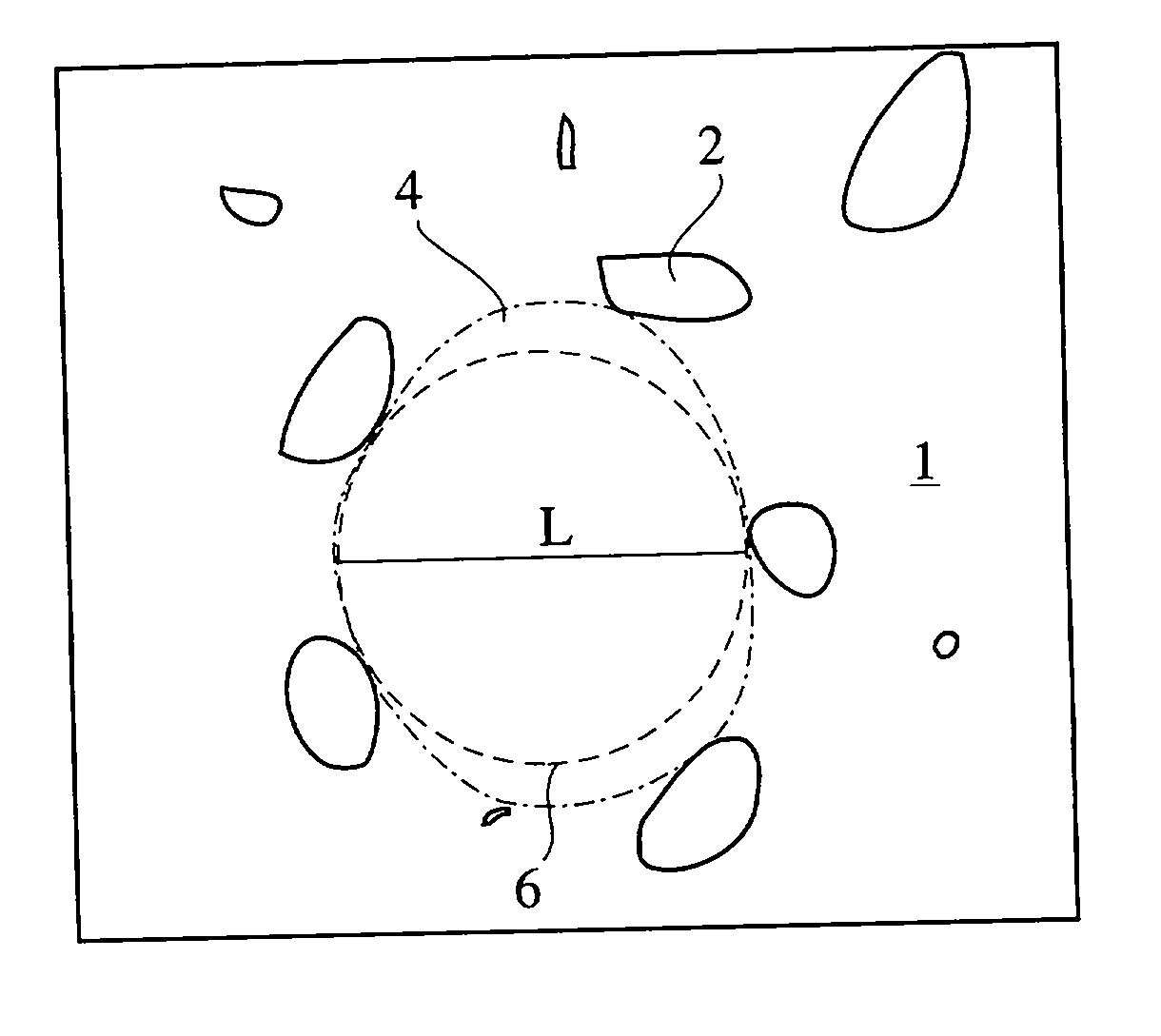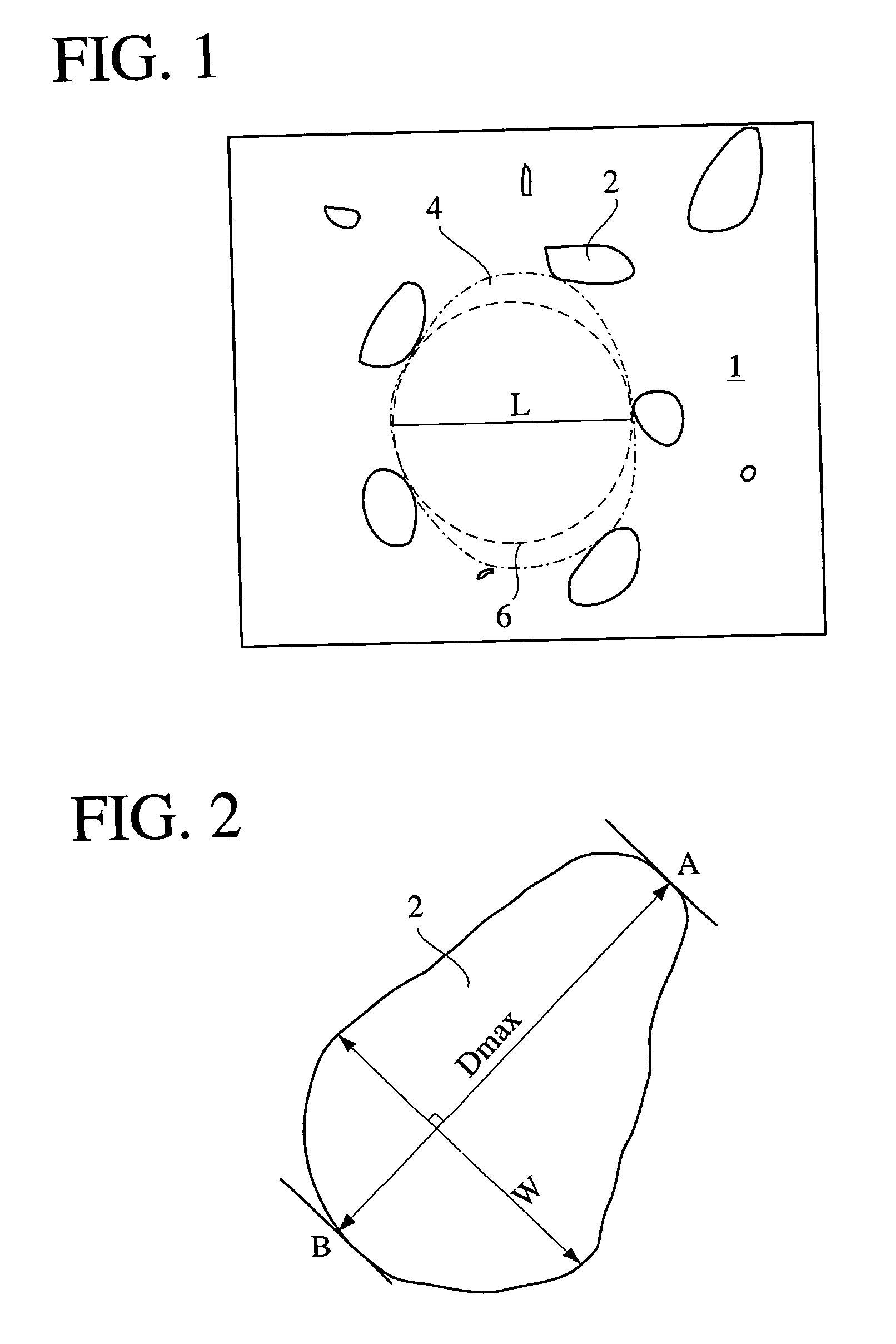Aluminum target material for sputtering and method for producing same
a technology of sputtering and target material, which is applied in the direction of vacuum evaporation coating, electrolysis components, coatings, etc., can solve the problems of defective thin films, poor heat resistance, and low resistance of high melting metals such as cr, ta, ti, etc., and achieves the effect of small splashing and low resistan
- Summary
- Abstract
- Description
- Claims
- Application Information
AI Technical Summary
Benefits of technology
Problems solved by technology
Method used
Image
Examples
examples 1-10
[0092] Each Al alloy having a composition shown in Table 1 was gas-atomized in nitrogen atmosphere and classified into a powder having a maximum particle size of 60 .mu.m. The powder was charged into a soft iron can of 133 mm in inner diameter, 15 mm in height and 2 mm in thickness. The can was degassed under heating while evacuating the can to a pressure of 10.sup.-3 Pa or lower. Then, the powder was pressure-sintered by HIP (hot isostatic press) under a pressure of 127 MPa at 550.degree. C. for 3 hours. Then the soft iron can was removed by machining to obtain each sintered, non-rolled, single-phase target material of 100 mm in diameter and 4 mm in thickness.
[0093] The microstructure of each target material thus obtained was observed under an optical microscope (.times.400) to measure the maximum diameter and the maximum aspect ratio (maximum value of longer diameter / shorter diameter) of the intermetallic compound in the microstructure, and the diameter of the largest inscribed ci...
examples 11-20
[0098] Each Al alloy having a composition shown in Table 2 was made into a rapid solidification powder by a gas atomizing method in nitrogen atmosphere and classified into a powder having a maximum particle size of 60 .mu.m. The powder was charged into a soft iron can having an internal volume of 330 mm.times.530 mm.times.50 mm and a thickness of 2 mm. The can was degassed under heating while evacuating the can to a pressure of 10.sup.-3 Pa or lower. The powder was subjected to HIP under a pressure of 127 MPa at 550.degree. C. for 3 hours, and then hot-rolling at a temperature and a rolling reduction shown in Table 2. Then the soft iron can was removed by machining to obtain each sintered, rolled, single-phase target material having a size of 550 mm.times.690 mm.times.6 mm.
[0099] The maximum diameter and the maximum aspect ratio of the intermetallic compound in the microstructure of the target material, the diameter of the largest inscribed circle in the pure Al area, and the number...
examples 21-25
[0107] Each Al alloy having a composition shown in Table 3 and a pure Al were made into rapid solidification powders by a gas atomizing method in nitrogen atmosphere and classified into a respective powder having a particle size of 150 .mu.m or less. The Al alloy powder and the pure Al powder thus obtained were blended in a rocking mixer so as to have a final composition of the target material as shown in Table 3. The powder mixture was charged into a soft iron can having an internal volume of 133 mm (inner diameter).times.10 mm and a thickness of 2 mm. After degassing the can at 400.degree. C. for 3 hours while evacuating the can to a pressure of 10.sup.-3 Pa or lower, the can was sealed. Then, the powder was subjected to HIP under a pressure of 127 MPa for 3 hours at a temperature shown in Table 3. After removing the can, the sintered powder was machined into a disc shape of 100 mm (diameter).times.4 mm to obtain each sintered, non-rolled, composite-phase target material having a ...
PUM
| Property | Measurement | Unit |
|---|---|---|
| Temperature | aaaaa | aaaaa |
| Length | aaaaa | aaaaa |
| Angle | aaaaa | aaaaa |
Abstract
Description
Claims
Application Information
 Login to View More
Login to View More - R&D
- Intellectual Property
- Life Sciences
- Materials
- Tech Scout
- Unparalleled Data Quality
- Higher Quality Content
- 60% Fewer Hallucinations
Browse by: Latest US Patents, China's latest patents, Technical Efficacy Thesaurus, Application Domain, Technology Topic, Popular Technical Reports.
© 2025 PatSnap. All rights reserved.Legal|Privacy policy|Modern Slavery Act Transparency Statement|Sitemap|About US| Contact US: help@patsnap.com



